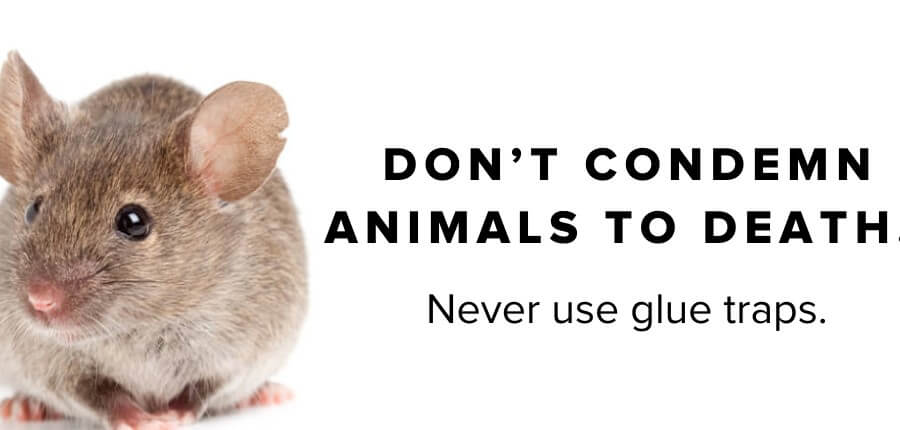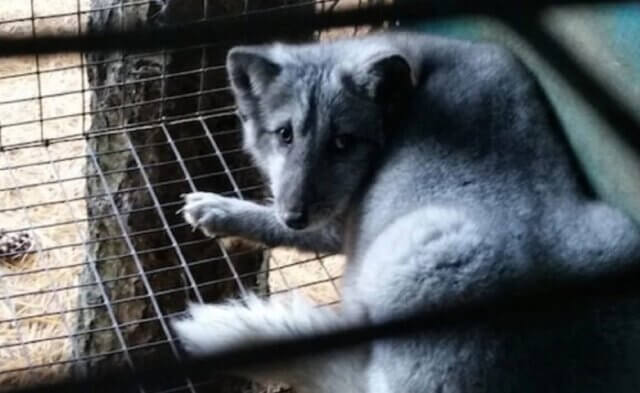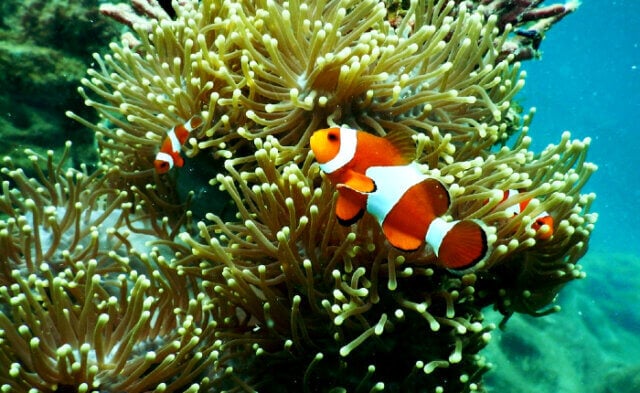“Seeing a tiny mouse struggling, screaming for help and having already chewed off his leg, next to another mouse who already died… this is an image that will stay with me forever. These traps should be banned.” – Kristin, 2023.
What Are Glue Traps?
Glue traps are one of the cruelest methods of killing animals in existence today. A glue trap is a small board made of cardboard, fiberboard, or plastic that’s coated with an adhesive. It can ensnare any small animal who wanders across or lands on its surface.
Glue Traps Cause Prolonged Suffering
Animals trapped in the glue panic and struggle, which causes them to become even more helplessly stuck. Often, the glue tears off their skin or feathers. Some break bones or even chew off their own limbs in a desperate attempt to escape. And some animals’ noses, mouths, or beaks become stuck in the glue, leading to suffocation, which can take hours.
Left alone, the terrified, injured animals die, sometimes days later, of blood loss, shock, suffocation, or thirst. Or they die from being crushed in the garbage, which is where the instructions on the traps advise consumers to put them.
If you encounter an animal who’s stuck to a glue trap, place a few drops of cooking oil or baby oil between the glue and the animal and gently work them free. Be sure to keep oil use to a minimum—otherwise, oiled animals can die from exposure later on. While removing the animal from the glue, slide tissue or paper underneath freed body parts to prevent them from getting stuck again. Once free, active and alert rodents can be released outdoors during good weather within a one-block radius of where they were discovered. Lethargic or imperiled animals or ones caught during extreme weather should be rushed to a local veterinarian or wildlife rehabilitator. You can also call PETA at 757-622-7382 for advice.
Glue Traps Are a Health Hazard
The U.S. Centers for Disease Control and Prevention (CDC) warns the public not to use glue traps because they increase human exposure to diseases carried by the animals they ensnare.
Countries and Companies Are Banning Glue Traps
Glue traps are undeniably cruel and sadistic. England, Germany, Iceland, Ireland, the Netherlands, New Zealand, Norway, two states and one territory in Australia, and four Indian states have also banned glue traps. In May 2023, the city of West Hollywood, California, banned the sale and use of glue traps, and hundreds of companies and other entities have prohibited their sale or use, including Target, Dollar General, Dollar Tree, Rite Aid, CVS, Walgreens, Walmart Canada, JPMorgan Chase & Co., Public Storage, and more than 100 airports.
Glue Traps Don’t Work
Glue traps are not a long-term solution for controlling “unwanted houseguests.” The devices fail to address the source of the problem: If holes aren’t plugged up and attractants aren’t removed, more animals will move in to take the place of those who have been killed. Poisons should never be used.
The Most Humane Alternative to Glue Traps
The only long-term way to control rodent populations is to make the area unattractive or inaccessible to them. The CDC states, “Removing food sources, water, and items that provide shelter for rodents is the best way to prevent contact with rodents.” Eliminate their food sources by keeping counter surfaces, floors, and cabinets clean, and store dry food and pet food in chew-proof containers. Seal trash cans (use bungee cords on lids), never feed companion animals outside, pick up fallen fruit and vegetables in orchards and gardens if possible, and never feed wildlife. Reduce the number of hiding places by keeping grass and vegetation trimmed back and outdoor furniture, grills and barbecues, and wood piles away from buildings.
Ammonia-soaked cotton balls or rags will drive rodents out. (They hate the smell.) Place them in areas where rodents, droppings, or nests have been seen, and be sure to give the animals a few days to leave. Then, to keep unwelcome “visitors” out, seal entry points using foam sealant, steel wool, hardware cloth, or metal flashing.
If any rodents need to be removed from buildings, this can be done with humane cage traps. Purchase a “smart” live mousetrap. To be humane, live traps must be checked hourly since trapped animals can quickly die from stress, exposure, or dehydration. Also, rodents must be released within 100 yards of where they were found, because animals who are relocated beyond their natural territory have trouble finding adequate food, water, and shelter and die as a result. When not in use, humane traps should be scrubbed with a mild bleach solution (to eliminate food smells), disabled, and securely stored—otherwise, animals can become trapped in them, unbeknownst to the owner.
What You Can Do Today
- Vow never to use glue traps.
- Politely ask your friends, family, and local businesses to stop using them, too.
- If you currently use glue traps, fold them with the sticky side in, ensure that no adhesive is showing, and throw them away.
- Learn about humane alternatives.
- Wherever you see glue traps sold, send a polite letter to the store manager asking that the store stop selling them, and have your friends do the same.
For more information about caring for wildlife, please visit PETA.org/Issues/Wildlife.





